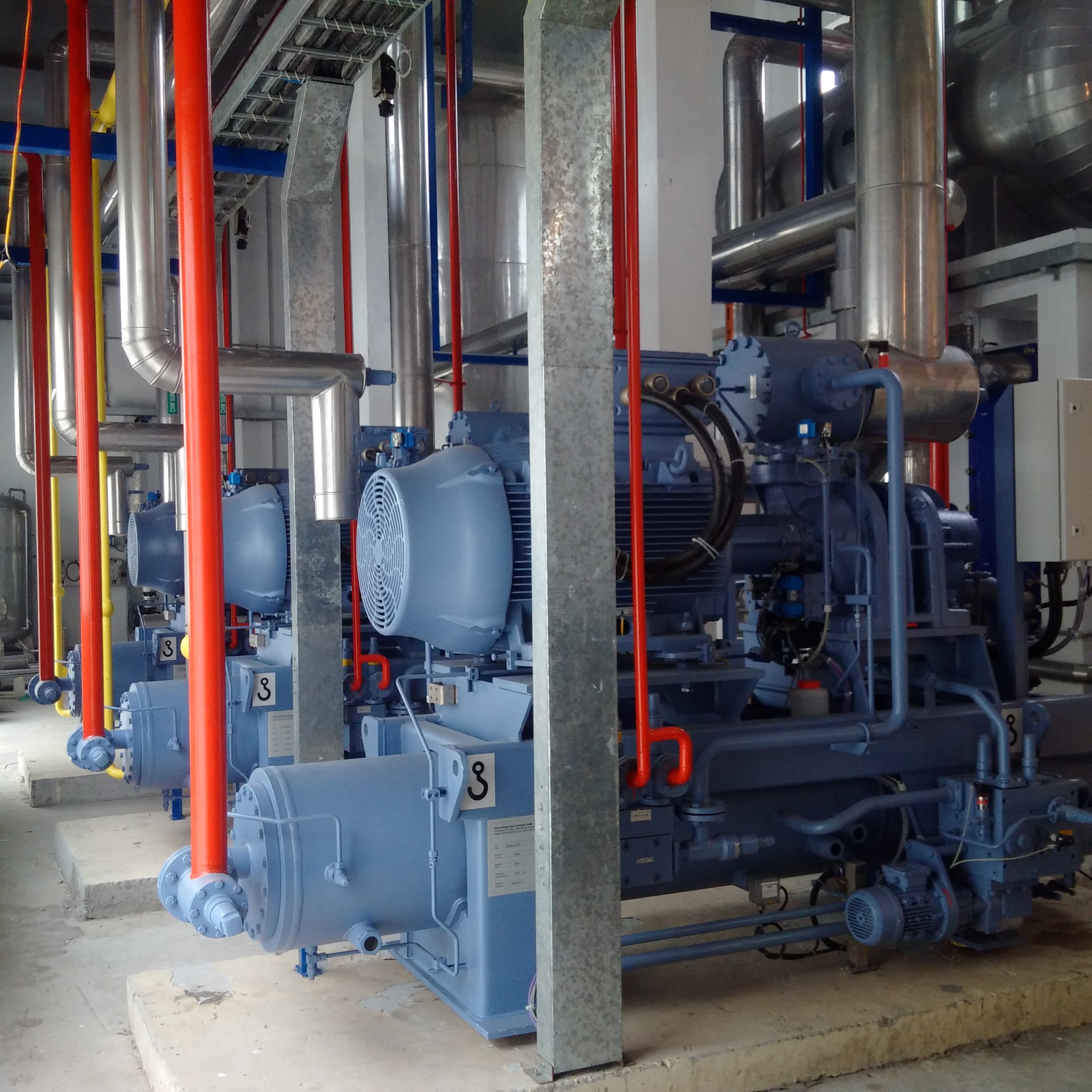In air conditioning systems, the cooling load rarely remains constant over long periods, because the internal and external heat and humidity loads are continually changing. Therefore, the demand for cooling capacity varies in terms of time and amount within a broad range.
The refrigeration machine itself is also subject to capacity variations due to changing condensation and vaporization pressures and temperatures. This means that the available refrigeration capacity also varies. The control task is to adjust the machine’s refrigeration capacity as closely as possible to the respective cooling demand. Control normally presents no special difficulties in systems with water chillers: On the consumer side, modulating mixing valves provide exact control of the air coolers. This means that humidity and temperature are continuously controllable. On the machine side, chilled water primary control is, for example, achieved via periodic switching of compressors.
AUTOMATION CONTROL
Through experience gained from numerous such installations, plus constant tracking of technological advances and independent choices of software and hardware options, Microtech performs a detailed survey to determine the most appropriate, long-term, upgradable solution that represents the best investment and requires the least possible downtime. A typical industrial refrigeration control system requires the following components:
Field devices for real-time monitoring of prevailing conditions, such as temperature and pressure transmitters. Automatic motor starters and Variable Speed Drives for pumps and compressors.
Automatic solenoid valve controls.
A dedicated industry-standard PLC controller that operates the system in a pre-defined sequence.
A Human-Machine Interface, or SCADA, system that allows both operator interaction and control room oversight through user-friendly, graphical-interface displays. While the system is programmed, according to established performance criteria, settings can be adjusted, as necessary. The system also facilitates troubleshooting by pinpointing what and where problems are, while providing service engineers remote access.
THE SOLUTION
Install a control system using state-of-the-art hardware and software that provides complete coverage of all critical operating areas.
Determine and implement proper settings to achieve optimum operating efficiency, even under varying loads conditions.
Incorporate automatic on/off switching, based on actual operational demand.
Provide centralized monitoring and control for the entire system via HMI and SCADA.
Automatically track and log important process variables, including temperature, pressure, etc.
Fully comply with factory regulations for proper storage and handling of products.
BENEFITS for Industrial Refrigeration Control Systems include:
Automatic energy saving functions to cut operating costs
Less maintenance costs and extended equipment lifetime by optimizing system run time
Improve production quality by consistent temperature control
Reduce plant disturbance by ensuring reliable operation by centralized control and monitoring of the entire refrigeration system
Better management control through real-time monitoring of the complete system at a central location.
More efficient troubleshooting and maintenance by pinpointing problems and solutions
User-friendly graphical displays by HMI and SCADA system
Who we can provide our services?










